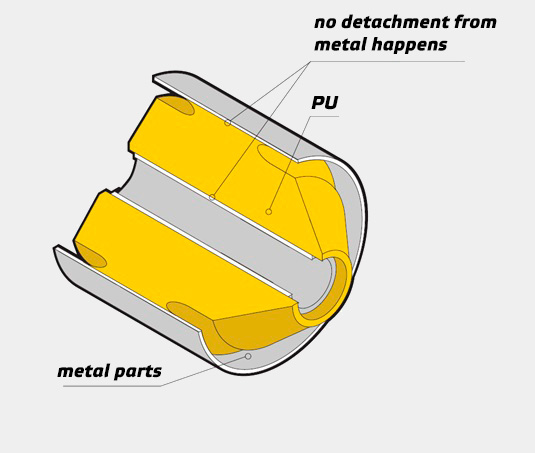
Bushing consists of two metal sleeves of different diameters arranged on the same axis one inside the other and separated by a layer of elastomer. This is a concept of Bushing structure. But in fact, despite the general working principle, Bushings are differ from each other. Design features are determined by structure of the unit, where Bushing is used and by the estimated loads. The presence or absence of compensation (reverse) holes, offset of metal sleeves, torsional work or stress work – all this make Bushings not like each other. To add more comfort, Bushings can be made fluid-filled, ie the elastomer component has a fluid-filled cavities inside.
Despite the diversity of shapes and sizes, Bushing will not serve long without one condition. Bushing must be monolithic. If you simply insert the elastomer bushing between two metal sleeves, it quickly becomes corrupted because of the abrasion between the mating surfaces. The solution to this problem is simple. The inner elastomer bushing should be adhered to the metal sleeves. This condition is realized by means of an adhesive layer firmly joining the elastomer to the metal. This makes Bushing monolithic.
The Bushings may contain elastomers that are different in composition. From the traditional rubber to the polyurethane. In recent years, the Bushings of polyurethane become increasingly popular. Synthetic polymers successfully compete rubber in a quality of vibration damping.
Adhesion of PU with metal parts is firmer than that of rubber (If not specified). Detachment from metal doesn’t occur.
